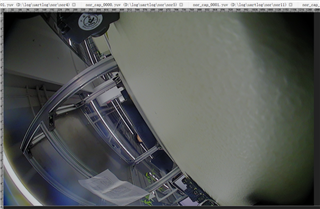Other Parts Discussed in Thread: TDA4VH, TDA4VM
Dear
For TDA4VH surround camera test demo .
The first time I test the capture is normal. After exiting the test demo , if I run the demo without reboot the TDA4VH, there will be an exception in the front of the saved image, such as NOK.png. Please help analyze .
The first image is problematic, as if the upper part of the image has been segmented. The second image is OK .


1) If you reboot the device and run the test demo again, the saved images are OK .
2) The configuration of the camera driver will only run during first initialization.
3) When exiting, the following resources were released and no obvious errors were found

4) The code for releasing resources can be found in the attachment log for the following fields: app_run_graph is done


